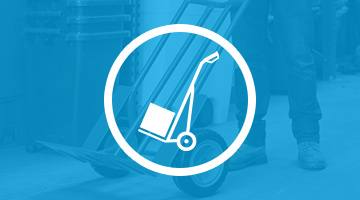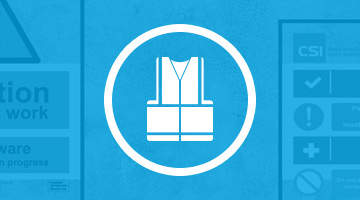
The CSI Knowledge Base
Welcome to the CSI Knowledge Base. Here you can find articles about a wide variety of workplace-related topics, providing you with advice and information on products, legislation and regulations that are relevant to your business.
Recommended Reading

WAREHOUSE
Rack Inspections
If you operate a warehouse or even just one bay of racking, you are obliged by law to inspect the pallet racking at regular intervals. Inspection of work equipment including racking is governed by the Workplace (Health, Safety and Welfare) Regulations of 1992 and the Provision and Use of Work Equipment Regulations (PUWER) of 1998. Inspections should take place no more than 12 months apart and should be carried out according to SEMA Guidelines No.6 – Guide to the Conduct of Pallet Racking and Shelving Surveys.

WORKSHOP & BENCHES
Your Guide to Workshop Equipment
No matter what type of workshop you require, be it domestic, educational, laboratory or engineering, two of the main principles when fitting it out must be organisation and application. An organised workshop will work quickly and effectively as every tool or part will have a place, and be easily identified and retrieved for use. This is especially important in more specified engineering sectors such as aerospace, automotive or oil and gas workshops, where high-value precise tools have particular storage requirements and need to be safe and secure.

STORAGE & SHELVING
Storage boxes and containers are found in every workplace, whether it’s an office, classroom, catering or retail outlet, warehouse, plant, factory or workshop. Their uses are many and varied, from simple storage to quick transport or organisation of materials. When choosing containment units you should consider the materials you are storing, organising or transporting and where and how you want them stored, organised or transported.

FACILITIES
Lockers can form part of a changing room complex, or be used throughout a facility to provide security and storage for personal effects or work equipment. Providing lockers can often help to reduce petty criminal actions within a facility such as theft or vandalism. They can also help with compliance to relevant health and safety legislation such as The Workplace (Health, Safety and Welfare) Regulations 1992, and the Personal Protective Equipment at Work Regulations, which require suitable storage to be provided for clothing and equipment under certain circumstances.

SEVERE WEATHER
The floods at the beginning of 2014 caused widespread chaos across the country, with homes and businesses disastrously affected by the stormiest weather to hit the UK for 20 years and the wettest January since records began in 1766. The estimated cost to the UK was over £1 billion. December 2015 saw record-breaking rainfall cause destructive flooding, causing over £1.5 billion in damage to the UK economy. With climate change making this type of weather more likely to occur, it is vital that businesses and homes in risk areas take flood protection measures to minimise the impact of flooding.

TRUCKS & TROLLEYS
Sack trucks, also known as hand trucks, come in a wide range of types and styles. At CSI Products, you can choose from 70+ sack trucks. With such a huge selection, you may wonder what the difference is between various types of sack trucks. In order to help you choose the right sack truck for your business or project, we have put together a guide highlighting the benefits of the different types of sack trucks.

OFFICE
The Trend Towards Sit Stand Desks
In Scandinavia, sit stand desks are commonplace. Over 90% of office workers using computers in Norway, Sweden, Finland and Denmark work at sit stand desks. In fact, in Denmark, employers legally have to offer their employees the opportunity to use a sit stand desk. Worldwide, the ill effects of prolonged sitting are steadily gaining recognition, with many smart watches and fitness trackers now including built-in reminders to stand up and move every hour. In the UK, height-adjustable desks are now embraced in more and more companies as being beneficial for wellbeing and productivity.

HEALTH & SAFETY
Your Guide to Types of Fire and Fire Extinguishers
There are different types of fire extinguisher for different types of fire – the type or types you require will depend on the potential fire hazards in your premises. Using the wrong extinguisher to fight a fire can be exceptionally dangerous, so you should choose carefully and always pay attention to the instructions for use.

LEGISLATION
Warehouse and Distribution Legislation
Warehouses can be dangerous places with heavy, unwieldy and sometimes precarious loads to be handled, equipment to be used that may require training and supervision, and processes that can put staff and the public at risk. A risk assessment should be undertaken under The Management of Health and Safety at Work Regulations 1999 and any and all reasonable action taken to reduce these risks.

